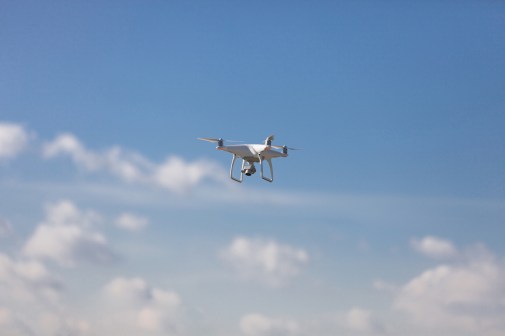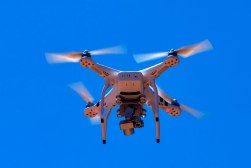Feds take the lead, but cities have role to play in drone policymaking — report

Though federal regulators have the final say when it comes to setting rules around drones, cities have a role to play in limiting where drones can take off and land, and setting criminal penalties for people using the technology recklessly, according to a new report.
The National League of Cities published an analysis of the national climate surrounding drones last month, aimed at helping local policymakers as they try to regulate drones without stymieing innovation in the field.
In the report, the group’s researchers frequently caution local lawmakers that the Federal Aviation Administration has asserted a leading role in developing policies for the country, but they also feel that there are opportunities for localities to set their own rules for drones that are best suited to their unique needs.
“Cities should recognize that drones can bring enormous potential benefits, and that most of the possible harm drones pose can be ameliorated by using land use and zoning power to define areas where drones may operate, and punishing reckless operators,” the analysts wrote.
Yet the researchers feel that “city officials are often hesitant to act unless compelled to by incidents in their communities,” and that many “are waiting for additional guidance from the FAA on how to regulate drone usage by individuals and corporations.”
Those concerns aside, they see a clear opening for local governments to start using their “land use and zoning powers to designate when and where drones may take off, land, and operate, as well any operational limitations or criteria.”
After all, the analysts point out that at least seven states — California, Florida, Illinois Minnesota, New York, Oregon and Texas — have passed laws regulating where aircrafts, including drones, can take off and land.
“Given that states and municipalities are generally permitted to regulate when and where aircraft takeoff and land, and because these regulations are afforded great deference by the courts, a state or municipality also has the ability to require notice of takeoffs and landings occurring within its jurisdiction,” the researchers wrote. “Indeed, if a state or municipality has the power to affirmatively prohibit takeoffs and landings from occurring in certain areas, it also has the lesser-included power to condition what steps must be taken to perform such takeoffs and landings, to include requiring notice be filed with the city prior to takeoff and landing.”
[Read more: State have enacted dozens of drone laws since 2013 — report]
However, the group urges caution when it comes to setting limits on where people can fly drones.
In a December fact sheet, FAA lawyers wrote that “no state or local government may impose an additional registration requirement on the operation of UAS in navigable airspace without first obtaining FAA approval,” and the National League of Cities researchers note that Miami lawmakers ran afoul of that provision last year.
When Miami’s city council passed an ordinance “limiting the use of recreational drones within a half-mile of events in parks, stadiums, open spaces, plazas, and streets that attract large groups, or over sporting or large-venue special events,” the analysts noted that the FAA stepped in to “request changes to the ordinance specifying that the FAA is the ultimate authority of national airspace.”
But after making a few alterations to the law, the city was indeed able to proceed without pushback from the federal regulators. The researchers believe that while localities should stay in close contact with the FAA when setting these policies, the agency is generally taking a “hands-off approach to regulating drones” and providing plenty of “opportunities for cities to act.”
The analysts believe that approach also opens the door for local lawmakers to “create an ordinance that punishes operators for operating an unmanned aircraft in a manner that recklessly endangers persons or property while considering appropriate enforcement infrastructure.”
In tandem with limits on where drones can take off, land and operate, the researchers feel cities have plenty of chances to craft customized drone policies.
“This two tiered approach addresses the key municipal concerns related to the use of drones,” the analysts wrote. “It allows cities to make local decisions about drone operations, enabling innovative commercial uses while protecting and encouraging recreational flyers and the traditional model aircraft hobby. It also gives cities a mechanism for making carefully calibrated decisions that protect persons and property against unsafe behavior while encouraging good behavior.”
Moving forward, they believe there will be even more opportunities for local lawmakers to step in and shape the policymaking process.
As more local governments get FAA approval to use drones themselves — the analysts note that most cities that have purchased drones are waiting on the green light from the FAA or developing “their own internal guidelines” before using them — the group feels cities will necessarily need to set their own rules about how their employees use them. After all, the analysts note that “over one third of all states have laws governing how public agencies can use drones,” making it a natural step for cities to take as well.
But the analysts also have a warning for local policymakers: Prepare for the unknown.
“Cities may have to deal with questions of liability when drones malfunction, crash, are taken over by hackers, or otherwise are rendered beyond the control of their operator,” they wrote.






